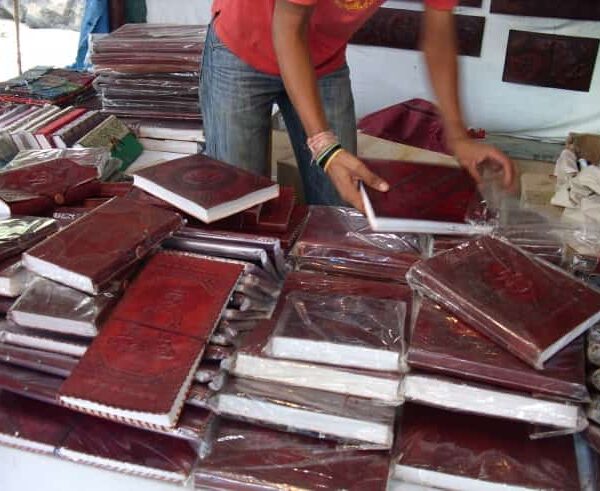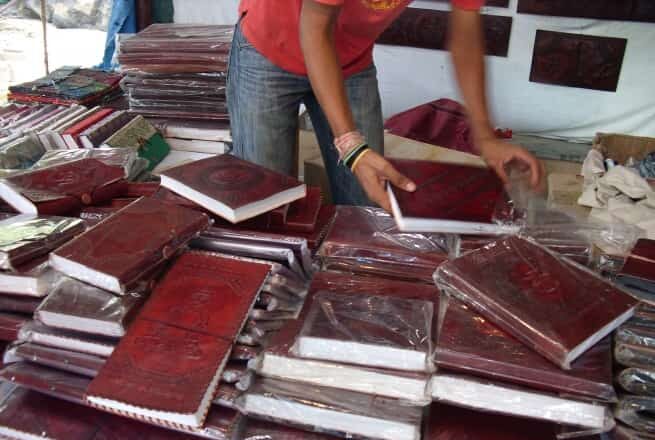Over the years, my travels have often taken me to India. Some of the most fascinating experiences I’ve encountered while there have occurred at the Indian markets, including one particular experience at the Dilli Haat market in the central part of Delhi. The great fun of these markets is the price negotiation (ahem, bargaining) for products. During this specific trip, I was in search for leather-bound journals I could use for note-taking during client visits.
I came across one young man selling these beautifully bound journals in all sizes. When I asked him how much they cost, the young man (I’ll call him Raj) told me 1,000 rupees. “That is way too expensive,” I said. “I’ll give you 100 rupees.” (At the time, this was a difference between $20 USD and $2 USD). We went back and forth, as I used my best techniques for drawing the price down, and he resisted with all kinds of “painful” looks on his face. Raj finally stopped at 500 rupees.
When I then told Raj I planned to buy eight journals, he took a very interesting tactic. He pulled out one of the books and began to show me the book’s workmanship—homemade banana paper with flecks of flowers, all hand-bound in camel leather binding with Ganesha wonderfully designed on the cover. Raj then said, with confidence and compassion, “500 rupees is my best and final offer.”
At this point, I did what everyone at the market does when they want a better price—I said, “Thank you,” and walked away. Raj let me go! He didn’t chase after me as I expected; he just let me go. I went to several other booths, all the while thinking about this journal. Thirty minutes later, I went back to Raj. I reiterated my stance: “I will buy eight of these, but you have to give me a better price.” He reiterated, “Sir, take a look at the wonderful camel leather and the homemade paper. 500 rupees—that is my best and final offer.” Again, Raj spoke with a level of confidence and not a bit of the smugness that I had returned. After a couple tries, I pulled out my wallet and bought eight journals at 500 rupees each.
Today, I often gift these journals to salespeople. While telling them the story of Raj, I explain how this relates to their role, right now:
- Know your costs: You need the systems and discipline to know cost, profit, company expectations of margins, etc. Bottom line: You have to be responsible for your business. How do you know a good deal versus a bad deal unless you are keenly aware of the cost structure of your offering?
- Know what is of value to the customer: We have always talked about value, but clearly understanding why the customer is buying, along with his or her needs, priorities, and interests, is critical in meeting the customer’s definition of value.
- Be willing to walk away, or watch the prospect walk away: There is a belief called “World of Abundance,” meaning there is abundant business for everyone. Acting with this belief gives you the personal power to be strong and purposeful in your approach to selling. The opposite is to believe in a world of scarcity, which causes us to feel as if we have to win every deal. That belief makes a salesperson’s job much more difficult, and frankly, no one wants to buy from a desperate salesperson.
I went back to the Dilli Haat market a year later, and there was no sign of Raj. I came across another journal maker and bought a couple of similar journals . . . for only 300 rupees! As I walked deeper into the market, I finally came across Raj and began to negotiate with him for more journals. “That is my best and final offer!” he repeated, as in the past. I tried, but not overly hard, to get the price down. In the end, I bought eight more journals at 500 rupees each.
Do you have clarity on what is your best and final offer?

